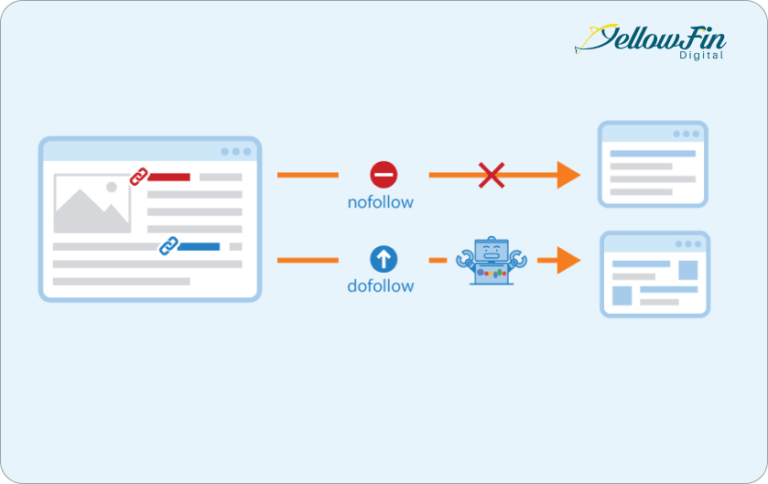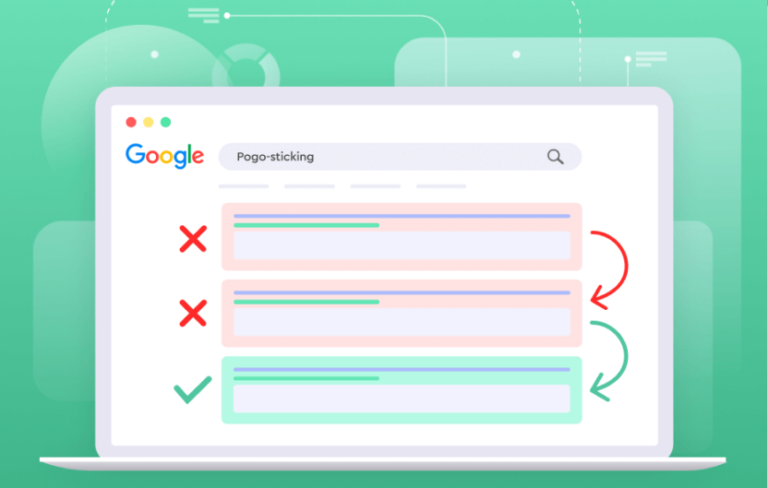Introduction:
Content optimization in SEO is crucial for any brand aiming to enhance its online presence. However, it’s important to remember that optimizing your content shouldn’t just be about appealing to search engine algorithms.
In fact, the core principle of effective content optimization is its human-centric approach. It’s about crafting content that resonates with people that they find valuable, engaging, and share-worthy.
When your content genuinely appeals to human interests and needs, search engine bots will naturally recognize its value, improving search rankings and opening the floodgates to increased web traffic. In this guide, experts from a top Houston SEO company will show you, step by step, how to make your content better for SEO.
But let’s first understand what is content optimization and why it’s so important for your brand’s online success.
What is Content Optimization?
Content optimization is the process of refining content to maximize its reach to the largest possible audience. This involves strategically using relevant keywords, crafting compelling titles and meta descriptions, and obtaining authoritative backlinks to achieve higher rankings on search engines like Google.
Content Optimization vs. Search Engine Optimization: What’s the Difference?

Content optimization and Search Engine Optimization (SEO) are related but distinct. SEO is about making sure search engines understand and rank your content. It involves using the right keywords, structuring your site well, and getting good backlinks. Content optimization, however, goes a step further. It’s not only about fitting into Google’s algorithm but also about connecting with your audience.
If you focus only on what Google wants, you might miss engaging your readers effectively. Our main aim is to attract real people, not just search engines. But ignoring SEO basics while focusing only on readers isn’t wise either. The best approach combines both: optimizing for search engines and creating content that satisfies search intent.
Before we start with our seo content optimization best practices, let’s first understand why it’s so important to optimize content.
Why Content Optimization Matters in SEO
Content optimization in SEO is crucial for reaching your audience effectively. It’s not just about what you write but how it’s presented. Imagine you’re an expert in your field and write a detailed blog post about a key topic. You expect it to attract a lot of attention, but months later, you see it hasn’t been noticed much. This could be due to several reasons:
- Choosing Less Searched Keywords: Maybe the keywords you used aren’t what people are searching for.
- Not Enough Detail: Perhaps your article doesn’t go deep enough into the topic.
- Confusing Structure: If your headings are unclear, it’s hard for search engines to understand your content.
- Mismatched Title and Content: A title that doesn’t match your content can mislead your audience. For instance, if your title promises “Easy Home Workouts,” but the content focuses mainly on advanced gym equipment, this mismatch confuses both Google and your readers about the article’s true focus.
Even the best articles can get lost online if your content isn’t optimized properly. It might be full of great insights and advice, but if search engines do not find it, don’t connect with readers, or target the wrong audience, it won’t achieve your marketing goals.
To help you navigate these challenges, experts from Houston SEO services have compiled a set of effective content optimization tips. These tips will help you find content that engages your audience and aligns with search engine criteria, ensuring your content marketing strategy is successful.
Difficulty ranking your content on SERPs?
YellowFin Digital specializes in effective content optimization strategies to place your content on the front page.
HOW TO OPTIMIZE CONTENT FOR SEO?
Target Relevant Keywords with Traffic
Keyword research is a critical step in creating search-engine-optimized content. It involves identifying the right topics and target keywords or phrases your potential audience is searching for.
However, this doesn’t mean that you can overload your content with numerous related keywords in an attempt to manipulate search engine rankings. This will actually have negative consequences and lower your chances of ranking well.
True keyword research is about deeply understanding your audience’s queries and ensuring that your content provides the answers they seek. Let’s explore a clear and effective method for conducting keyword research.
Use a Keyword Research Tool

Selecting the right keywords is crucial, and a keyword research tool can be invaluable in this process. It helps identify searches that have significant traffic and manageable competition levels. These tools offer various keyword suggestions, enabling you to choose the most effective ones for your strategy.
If your initial keyword isn’t quite right, look for alternatives with either more traffic or less competition. Additionally, don’t overlook the potential of zero-volume keywords. While they may appear low search volume, they can be valuable in targeting niche audiences.
- Understand Why People Search: Knowing the reason behind a search is important. Your content should directly answer the searcher’s question or need. They’re less likely to engage with it if it doesn’t match their search purpose.
- Include More Related Topics: Check the top-ranking content for additional topics they discuss. These are your secondary keywords. Covering these topics makes your content richer and more informative, which can help it rank better.
Include Semantically Related Keywords
Boost your content’s ranking potential by including semantically related keywords. These terms and phrases are conceptually linked to your main keyword, aiding search engines in understanding the breadth of your topic. It’s essential to keep your content aligned with its original intent.
For example, if your primary keyword is “best coffee brewing methods,” but if you don’t mention specific methods like French press, drip, or espresso, your content may lack depth and struggle to rank.
You can use tools like Semrush, Google Keyword Planner, or Ahrefs to discover these semantically related keywords. They offer valuable insights into related terms that can enhance your content’s relevance and depth.
After identifying the right keywords, weave them into your content naturally. This ensures your content remains engaging and readable while being optimized for search engines.
Plan A Structure That’s Easy to Follow
After you’ve picked your topic and figured out your keywords, the next step is to organize your content. This means designing a logical flow that is easy for readers and search engines to follow. In technical SEO terms, this involves organizing the H tag hierarchy of your page.
Start with your main keyword, which is the central theme of your content. Depending on how long your article will be, pick about five main ideas or themes. These will be your big headings (H2s) and will form the main parts of your content.
Next, use research on related keywords and look at what’s already popular for your main keyword to help decide what goes under each main heading. Under each H2, list the smaller topics or points you want to discuss. You can write about these in paragraphs or break them down into smaller headings (H3s). If your topic is really detailed, you might even use smaller headings (H4s) to keep everything clear.
Breaking your topic into smaller parts makes your content easier to read. It helps people visiting your page to find what they need quickly and understand your information better. Also, having a clear structure with headings makes it easier for search engines to review your article and understand what’s important, which can help your content rank higher.
Implementing Basics of SEO
SEO allows you to improve your content even after it’s published. But it’s important to get some basics right from the start. Missing these early steps can limit how well your content performs. Keep these essential tips in mind for basic SEO in your content:
- Choose the Right Keywords: Pick the keywords that people are searching for and ensure you understand why they’re searching for them. If you miss this early on, it can be hard to fix later.
- Use a Specific Keyword: Every article or page you publish should focus on one main keyword.
- Optimize Your URL Slug: Keep it short yet descriptive, including the primary keyword. Be cautious about changing it after indexing your content, as this can lead to crawlability issues.
- Place Your Main Keyword in Key Spots: Make sure your main keyword appears in the main heading (H1), subheadings (H2), the title that appears in search results (meta title), the short description under the title in search results (meta description), and in the first few lines of your content.
Once your content starts showing up on the second page or lower part of the first page in search results, you can apply more advanced optimization techniques to improve its position further.
Use Topic Clusters

Enhancing your SEO is possible by organizing your content into what’s known as topic clusters. So, what are these? Topic clusters are groups of articles that are closely related and revolve around a main, broader topic. They help your audience get a full picture of a subject they’re interested in.
Having these clusters on your site also shows Google that you have a comprehensive understanding of a particular topic, which can establish your site as an authority in that area. This builds trust with your audience and shows Google the relevance of your content to the topic.
Here’s how to implement topic clusters:
- Choose Main Topics: Identify the main subjects you want your site to be recognized for.
- Write Pillar Content: Create ‘pillar posts’ – these are comprehensive articles that cover the main topic broadly.
- Develop Related Articles: Link these pillar posts to more specific articles that dive deeper into aspects of the main topic.
This approach helps search engines like Google to crawl better and understand the scope of your content, and it also makes your site more user-friendly.
Boosting User Engagement with Visual Content
Adding visual elements to your content can significantly increase user engagement. Visitors are more likely to spend time interacting with content with compelling visuals. Research indicates that articles containing seven or more images garner 116% more organic traffic than those without images.
Furthermore, articles with at least one video experience an 83% increase in traffic, while those with three or more videos can attract 55% more backlinks.
To enrich your content visually and make it more engaging, consider the following strategies:
- Incorporate Infographics: Use infographics to present data or concepts visually. They make complex information more digestible and visually appealing.
- Utilize Videos: Embed videos, whether produced in-house or sourced from industry experts. Videos are excellent for breaking down intricate topics and adding a dynamic touch to your content.
- Showcase Industry Examples: Include real-life examples or case studies. This approach makes your content more tangible and informative for your audience.
- Collaborate with Influencers and Content Creators: Form partnerships with influencers and content creators. Their unique perspectives can add depth to your content and enhance its credibility and outreach.
By weaving these visual elements into your content, you boost its appeal, enhance its SEO performance, and expand its reach to a broader audience.
Cover The Topic In-Depth
Deeply exploring the topics that feature on your website can help your SEO. This approach shows you know much about the subject and allows you to link to other related content you’ve created. To make sure your content covers a topic well, look at what the top articles on Google’s first page are doing. These articles are usually full of useful information and are set up in a way that Google likes.
Use these successful articles as examples. Mix their ideas with your own to cover your topic completely. But remember, it’s important to add your own unique ideas and information for quality content and not just repeat what others have said.
Also, think about how long your content should be. You can get an idea of a good length by looking at the word count of the top five articles. Doing this helps your content match what’s already doing well and could make Google rank it higher, increasing its visibility online.
Strategic Internal Linking

Every link in your content should serve a purpose, acting as a bridge connecting various website pages. These links are more than just pathways; they invite your audience to delve deeper into related topics, enhancing their journey across your site. Efficient internal linking makes it easier for visitors to find relevant information and significantly boosts their engagement and overall experience on your site.
From an SEO perspective, the effectiveness of a link is measured by how often it’s used. The more a link clicks, the stronger the relationship between the connected content pieces. This is a key strategy in driving organic traffic to specific pages. Present your links as calls to action (CTAs) to make them more impactful. Encourage your readers to click by subtly guiding them to more content. This approach can increase engagement, as readers are likelier to follow a link that promises further value.
Continuously Improve Your Content
Your job isn’t done after publishing your content; it’s an ongoing process. It’s essential to regularly revisit and enhance your most significant pieces, especially if your content focuses on swiftly changing subjects like the latest SEO trends or content optimization.
Consider tweaking your article titles to emphasize that your content is fresh and relevant. Surprisingly, one of the most effective ways to enhance SEO is by refining existing content through periodic check-ups and updates. Interestingly, 65% of successful content marketers conduct these check-ups twice a year, and more frequent reviews may lead to even better results.
SEO Content Optimization Tools
Thanks to SEO content optimization tools, improving your online content has become easier. These tools analyze successful content and provide tips to enhance your own. Some even help with adding internal links and making on-page improvements. By following their advice, you can make your content more effective, whether it’s using relevant keywords, internal links, optimizing headings, images, and more. Let’s check out a few of these useful tools:
Semrush:
Semrush is a versatile SEO tool that provides a comprehensive keyword overview, making it easier to identify valuable keywords for your content. It also offers a content SEO template, which suggests relevant keywords and internal linking opportunities to optimize your articles effectively. Semrush is known for its in-depth competitive analysis and backlink tracking, making it a valuable resource for content optimization.
Yoast SEO:
Yoast SEO is a WordPress plugin designed to improve on-page SEO. It offers a readability analysis, helping you create informative and easily digestible content for your audience. The plugin suggests relevant keywords in your content and provides internal linking recommendations, ensuring your articles are well-optimized for search engines.
Ahrefs:
While Ahrefs is primarily known for its backlink analysis, it also offers powerful content optimization features. It helps you identify content gaps by analyzing top-performing articles in your niche. Ahrefs provides keyword opportunities and suggests relevant keywords to incorporate into your articles, ensuring your content ranks well in search results.
BuzzSumo:
BuzzSumo is a content research tool that analyzes popular content within your niche. It helps you understand what topics resonate with your target audience, making crafting content ideas likely to generate engagement and sharing easier. You can create highly relevant and engaging articles by identifying trending topics and analyzing competitor content.
Optimizing Experts to Enhance Your Content and Brand
While implementing best practices can kickstart a slow-moving, low-traffic website in the right direction, it doesn’t stop there. Setting clear goals, monitoring performance, and continuous testing and optimization are key. You grow your traffic by demonstrating to your audience that you’re dedicated to creating content that caters to their search query.
At YellowFin Digital, an award-winning digital marketing agency, we specialize in driving targeted traffic to your industry with our premier SEO services. Our team of SEO experts collaborates with you to understand your customers, define your market, and create engaging, well-optimized content that motivates your audience to take action and boosts your ROI.
Contact us today to experience the benefits of content optimization with our professional SEO company in Texas.



